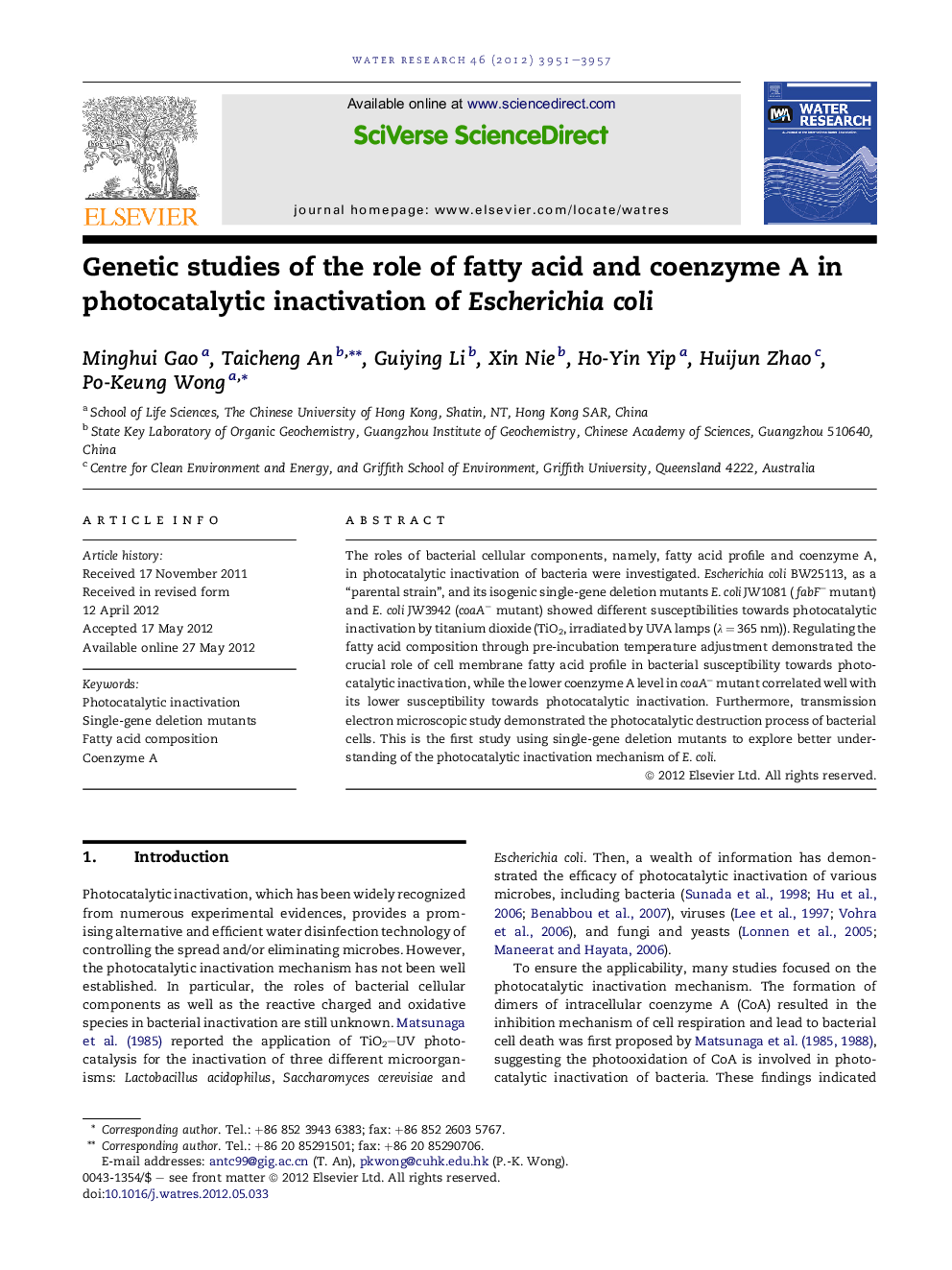| Article ID | Journal | Published Year | Pages | File Type |
|---|---|---|---|---|
| 4482344 | Water Research | 2012 | 7 Pages |
The roles of bacterial cellular components, namely, fatty acid profile and coenzyme A, in photocatalytic inactivation of bacteria were investigated. Escherichia coli BW25113, as a “parental strain”, and its isogenic single-gene deletion mutants E. coli JW1081 (fabF− mutant) and E. coli JW3942 (coaA− mutant) showed different susceptibilities towards photocatalytic inactivation by titanium dioxide (TiO2, irradiated by UVA lamps (λ = 365 nm)). Regulating the fatty acid composition through pre-incubation temperature adjustment demonstrated the crucial role of cell membrane fatty acid profile in bacterial susceptibility towards photocatalytic inactivation, while the lower coenzyme A level in coaA− mutant correlated well with its lower susceptibility towards photocatalytic inactivation. Furthermore, transmission electron microscopic study demonstrated the photocatalytic destruction process of bacterial cells. This is the first study using single-gene deletion mutants to explore better understanding of the photocatalytic inactivation mechanism of E. coli.
Graphical abstractFigure optionsDownload full-size imageDownload high-quality image (184 K)Download as PowerPoint slideHighlights► The isogenic fabF− mutant is slightly more susceptible to photocatalytic inactivation. ► The isogenic coaA− mutant is less susceptible to photocatalytic inactivation. ► Temperature regulates the ratio of unsaturated to saturated fatty acid (FA) of cell membrane. ► FA profile and coenzyme A level significantly affect photocatalytic inactivation of bacteria.
